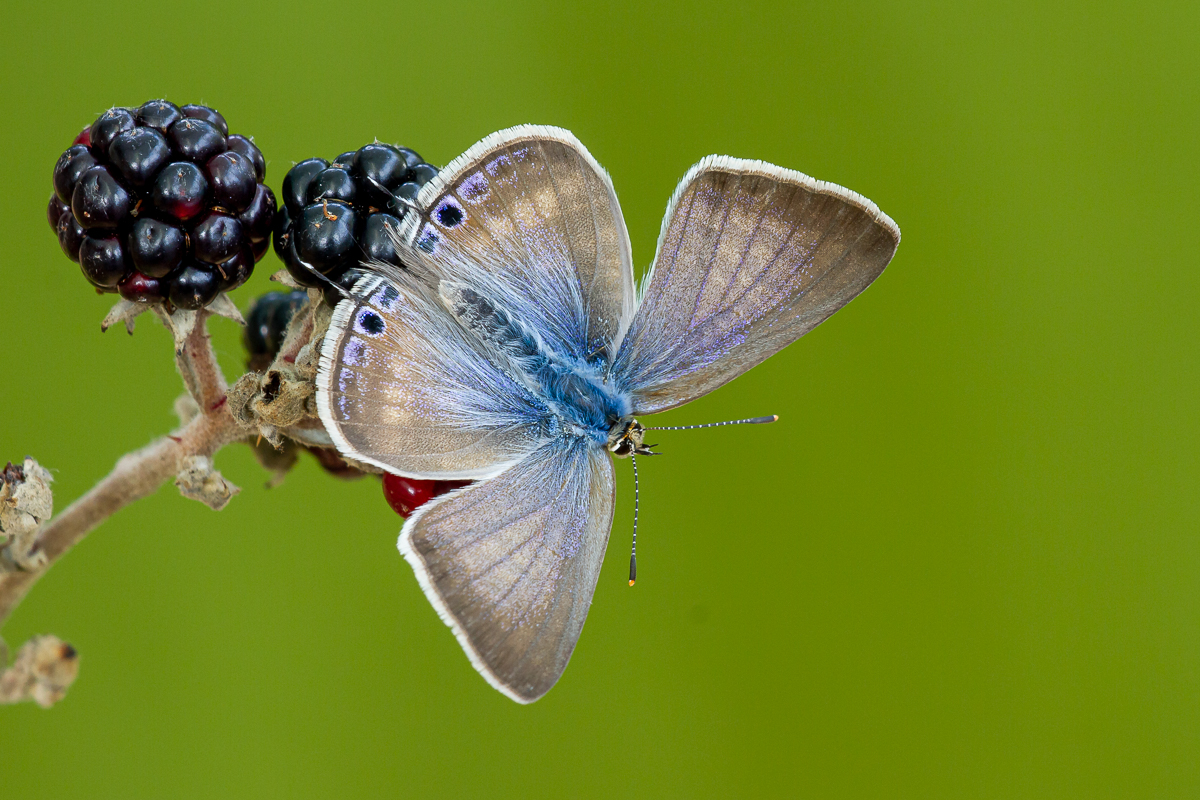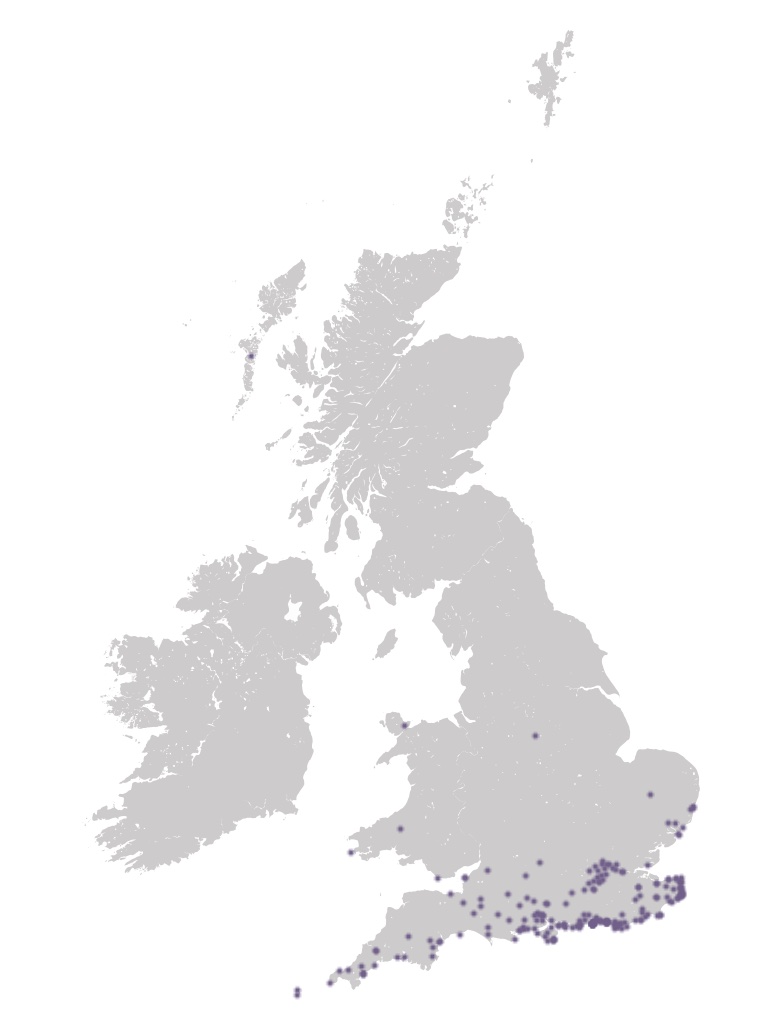
Photo © Peter Eeles
The Long-tailed Blue is an extremely rare migrant to the British Isles. It was first recorded from Brighton in East Sussex, and Christchurch in Hampshire, in August 1859. By 1939 a mere 36 sightings had been recorded - mostly of individuals. Between 1940 and 1988 another 85 sightings were recorded. The only major immigration was in 1945, a good year for migrants in general, when there were 38 sightings. A recent immigrant was observed in Hampshire in 2006.
However, the most noticeable influx occurred in 2013 when Long-tailed Blue were seen at 9 sites in Devon, Hampshire, Sussex, Kent and Suffolk. Mating pairs, eggs and larvae were also found, confirming that the species had successfully bred and, on 8th September 2013, the first of the offspring emerged in Wiltshire and Kent. Sightings from other counties followed, with sightings continuing into October.
On the continent, this butterfly is considered a pest of pea crops, one of the larval foodplants, where it can cause considerable damage. This butterfly is continuously-brooded on the continent but is unable to survive our winters. Although this species is a rare migrant to the British Isles, it is one of the most-widely distributed Lycaenids in the world. The vast majority of records in the British Isles are from the south of England and the Channel Islands.
The adult butterfly has a jerky and rapid flight that is very similar to a hairstreak, but flies closer to the ground. It is also a strong flyer, borne out by its ability to migrate over large expanses of land and water. This butterfly possesses a pair of "tails" that give this species its name, together with an eye spot where the tails meet the wings. These act to divert a predator, such as a bird, away from the essential body parts. When at rest, the butterfly will rotate the hindwings which causes the tails to move, diverting predators from the more-important parts of the body.

The adult butterfly is most-often seen flying around garden flowers, especially those which are potential foodplants. However, it may also be found on open downland.
Description to be completed.
The primary larval foodplants are Bladder-senna (Colutea arborescens), Broad-leaved Everlasting-pea (Lathyrus latifolius) and Broom (Cytisus scoparius).
